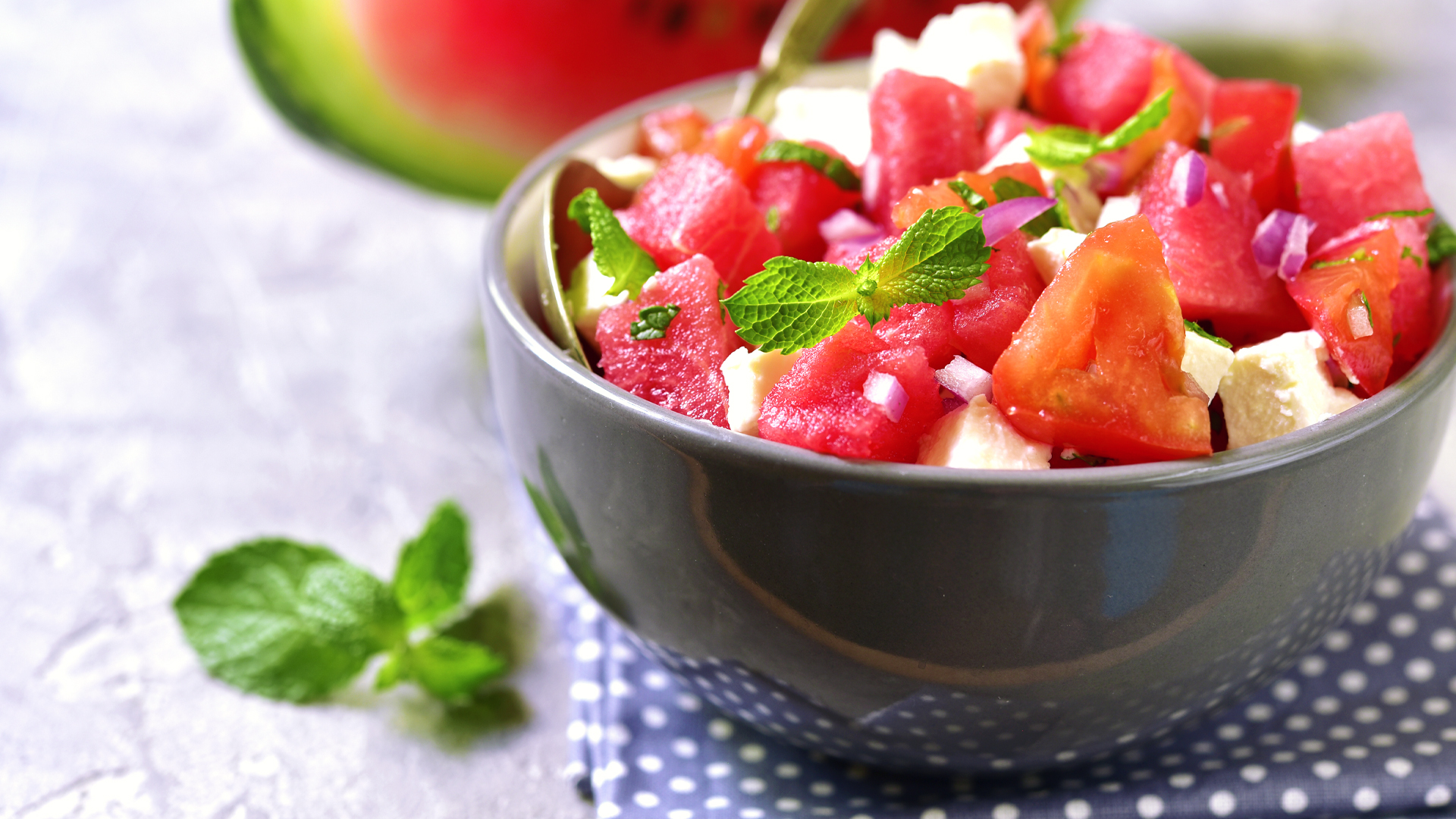What is Food Combining and Why is It Important for Health?
Is following a food combining chart necessary for optimal digestion? Is there any scientific validity to mixing or not mixing certain foods together?
Food combining is one of the oldest diet philosophies. People have been following its principles since prehistoric times. And now, thanks to convenient food combining charts, it’s back in vogue.
If you want to learn more about the basics of food combining, you’re in the right place. In this article, we’ll cover the following:
- The theories behind it
- The origins of the diet
- The research to support it
- How to get started
Thinking about scrolling all the way down for a sneak peek at the convenient food combining chart? Make sure you read this article first. Because if you don’t, it’s kind of like trying to put together complex IKEA furniture without first reading the instructions. It’s one thing to put a dresser together incorrectly. It’s another to potentially compromise your digestion.
With that disclaimer out of the way, let’s get to the facts.
What Are The Principles Of Food Combining?
In a nutshell, the theory behind the diet is two sides of the same coin. On one hand, mixing certain foods together promotes optimal digestion. And on the flip side, eating certain foods together can compromise digestion. Proponents of the diet believe that habitually combining the wrong foods together may lead to chronic digestive disorders.
There are several commandments when it comes to food combining. Here are five of the most common ones that you may see on a food combining chart.
- Thou shall not combine animal protein with starchy carbohydrates. (No steak and mashed potatoes).
- Thou shall eat complex carbohydrates before protein. (Perhaps this is why Italians eat a primo of pasta before an il secondo of meat or fish.)
- Thou shall not eat fruit after a meal. (Doing so may produce gas.)
- Thou shall not drink lots of water during a meal. (Too much H2O may dilute the stomach’s digestive juices.)
- Thou may combine fruit with nuts and/or seeds but only as a snack, well before a meal.
The Origins of Food Combining
There’s another commandment of meal mixing you’re probably familiar with that dates back approximately 2600 years. In the Old Testament (the Hebrew Bible), Exodus 23:19 states, “Do not boil a young goat in its mother’s milk.”
The interpretation of this Biblical passage forms the basis of one of the main rules of Jewish kosher dietary laws (kashrut): mixing meat and dairy at the same meal is forbidden.
People who observe kosher dietary law must wait at least a few hours before having meat after consuming dairy or vice versa. This dietary law applies to modern food combining principles. People who follow proper meal mixing for optimal digestion don’t eat more than one animal protein at the same time. No washing down steak with a glass of milk.
But the history of food combining is even older than Biblical times. The ancient traditional medicine systems of India (Ayurveda or Ayurvedic medicine) and China (Traditional Chinese Medicine or TCM) are both over 5,000 years old and include food combining principles.
Why did the ancient Chinese and inhabitants of the Indian subcontinent adhere to proper meal mixing? After all, many centuries ago, food options were much more limited than today.
The reason why is because of the wisdom of these ancient healing systems. TCM and ayurvedic physicians were aware that digestion is a complex, energy-intensive process. And because of this, philosophies on food combining were developed in order to fully absorb nutrients. In TCM, optimal digestion transforms nutrients into “Qi.” The loose translation of Qi is “vital life force” or to put it more simply, energy. Ayurveda has the same belief system. Only in the ancient Hindu language, Sanskrit, vital life force is “prana.”
pH Balance And The Meal Mixing Renaissance
There’s more to the resurgence of proper meal mixing guidelines than food combining charts. We can also thank the popularity of alkaline diets. The main philosophy of the alkaline diet is that eating too many processed foods leads to acidity in the body.
Acidity in the body may promote chronic disease, the theory goes. Therefore, eating only whole foods and avoiding added sugars alkalizes the body and prevents the blood pH from becoming too acidic. Some proponents of the alkaline diet follow the above food combining principles to prevent excess acidity.
The revival of food combining is perhaps also attributed to the fact that many people have digestive disorders. Without a doubt, an underlying cause of digestive orders is the massive amount of processed food the modern consumer has access to.
It’s no wonder that food combining charts have become popular. Perhaps one additional rule that should be included on a chart: don’t mix chips, crackers, cookies, pretzels and other snacks together.
But is There Any Research Supporting Food Combining?
The honest truth is that there is a dearth of research on the subject. And it’s no wonder. No pharmaceutical company can patent food combining. Clinical trials are very expensive. So if there’s no money to be made on food combining, there’s not going to be funding for research.
That doesn’t mean, however, there is no merit to the dietary principles. We can point to the ancient wisdom of kosher dietary law, Ayurvedic medicine and TCM. In addition, we can also use our own anecdotal observations. For example, how do you feel after eating a bacon cheeseburger? If you feel like you’re in a food coma, perhaps there’s some merit to not mixing different animal proteins or mixing meat and dairy.
Does your belly have distention after eating steak and potatoes? How about after a big meal with a dessert of fruit salad? If you experience indigestion, gas, constipation or other symptoms, then it’s a good idea to take a look at a food combining chart.
Food Combining For Vegans and Vegetarians
However, if it’s scientific validity you seek, proof you shall receive. The concept of protein combining is simple; biochemistry 101. There are 20 amino acids, which are the building blocks of protein. Out of the 20 amino acids, we must get nine of them from food. This is why these nine amino acids are “essential.”
If you eat animal protein, you don’t have to worry about getting all nine essential amino acids. That’s because animal protein is a complete protein; all nine essential amino acids are present.
But if you’re vegan or vegetarian, you may need to practice food combining to obtain all nine essential amino acids.
There’s no better illustration of protein combining than beans and rice. Beans lack the amino acid, methionine. Grains such as rice are rich in methionine. Beans and rice are symbiotic because grains lack the amino acids lysine and threonine, which beans are abundant in. (Beans, beans the more you eat, the more lysine and threonine you combine.)
Technically, you don’t have to eat beans and rice at the same time. You can eat them separately within the same day to get the full complement of essential amino acids.
Eating pasta and broccoli together is another example of vegetarian food combining to get all the essential amino acids in one yummy meal.
How To Get Started With Food Combining
You’re so close to checking out the best chart for learning the do’s and don’t of proper food combinations. We encourage you to print out the chart or snap a pic with your smartphone camera. That way, you can use it as a guide for meal prep.
But before you check out the chart below, let’s review.
Food combining may seem overwhelming. But it’s really simple—the chart we provide below makes it really easy to follow. Although research on the subject is lacking, there is validity to it. We can look back to ancient wisdom and observe how our body feels after eating specific meals. (Food journaling is great for this.)
To follow the basics of food combining, just remember these 5 rules:
#1: Don’t eat meat with starchy carbohydrates (potatoes, rice, pasta, etc.)
#2: Don’t eat fruit with a meal. Eat it as a snack alone or with nuts or seeds.
#3: Eat staples like rice or pasta before eating meat, chicken or fish.
#4: Don’t drink a lot of water during meals.
#5: If you’re vegan or vegetarian make sure you eat a wide variety of plant-based proteins to make sure you’re getting all nine essential amino acids.
Congrats on making it to the end. Now, click here to enjoy our simple, convenient food combining chart.

Disclaimer: The statements made in this article have not been evaluated by the Food and Drug Administration. Any products or treatments mentioned are not intended to diagnose, treat, cure, or prevent any disease. Please consult a licensed medical practitioner for medical advice.
At Innovative Medicine, we believe in transparency. We want you to know that we may participate in affiliate advertising programs pertaining to products mentioned herein.
See how we can help you restore complete health of body, mind & spirit.
Join our mailing list and receive exclusive offers + information!







Leave a Reply
Want to join the discussion?Feel free to contribute!